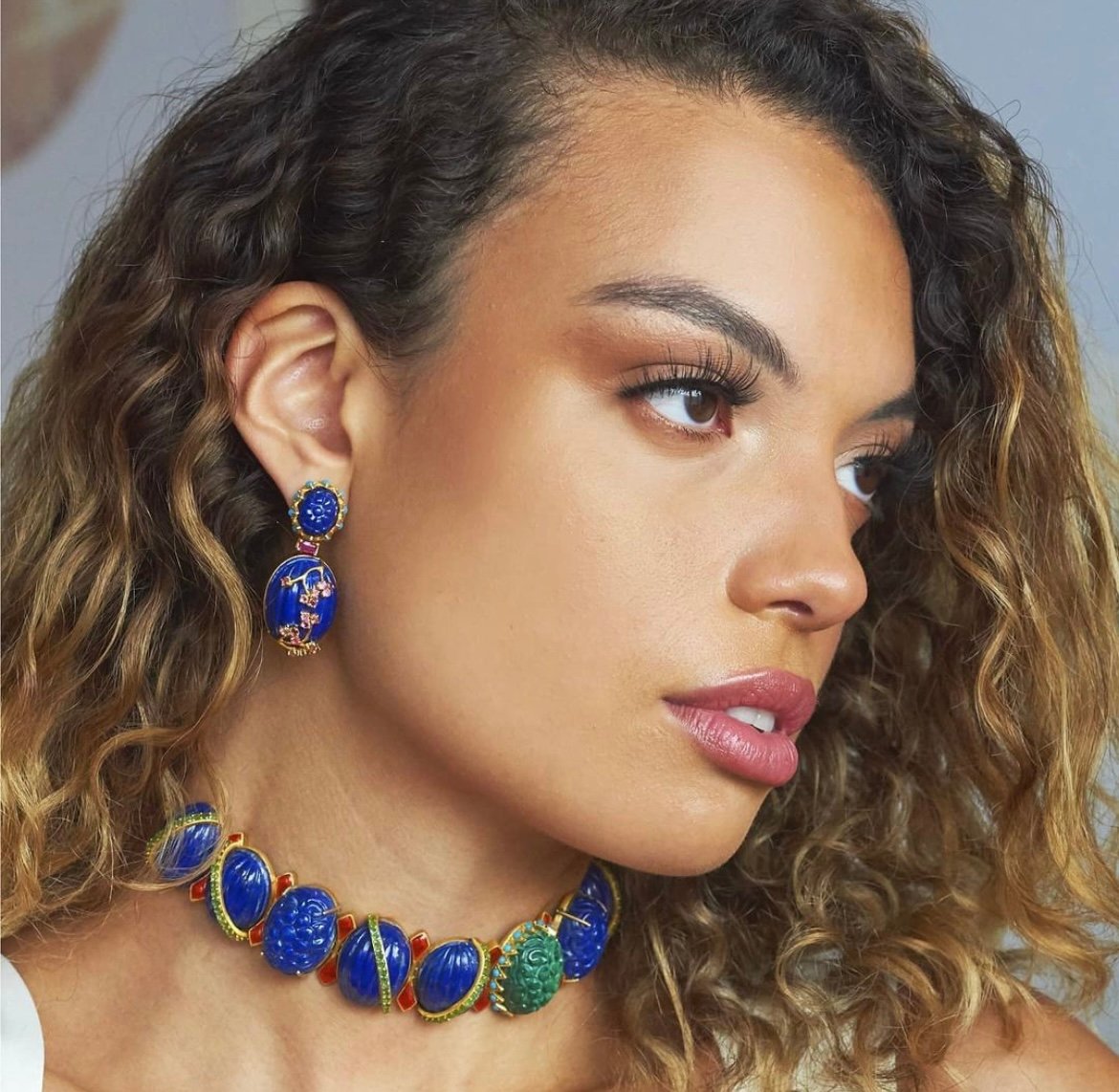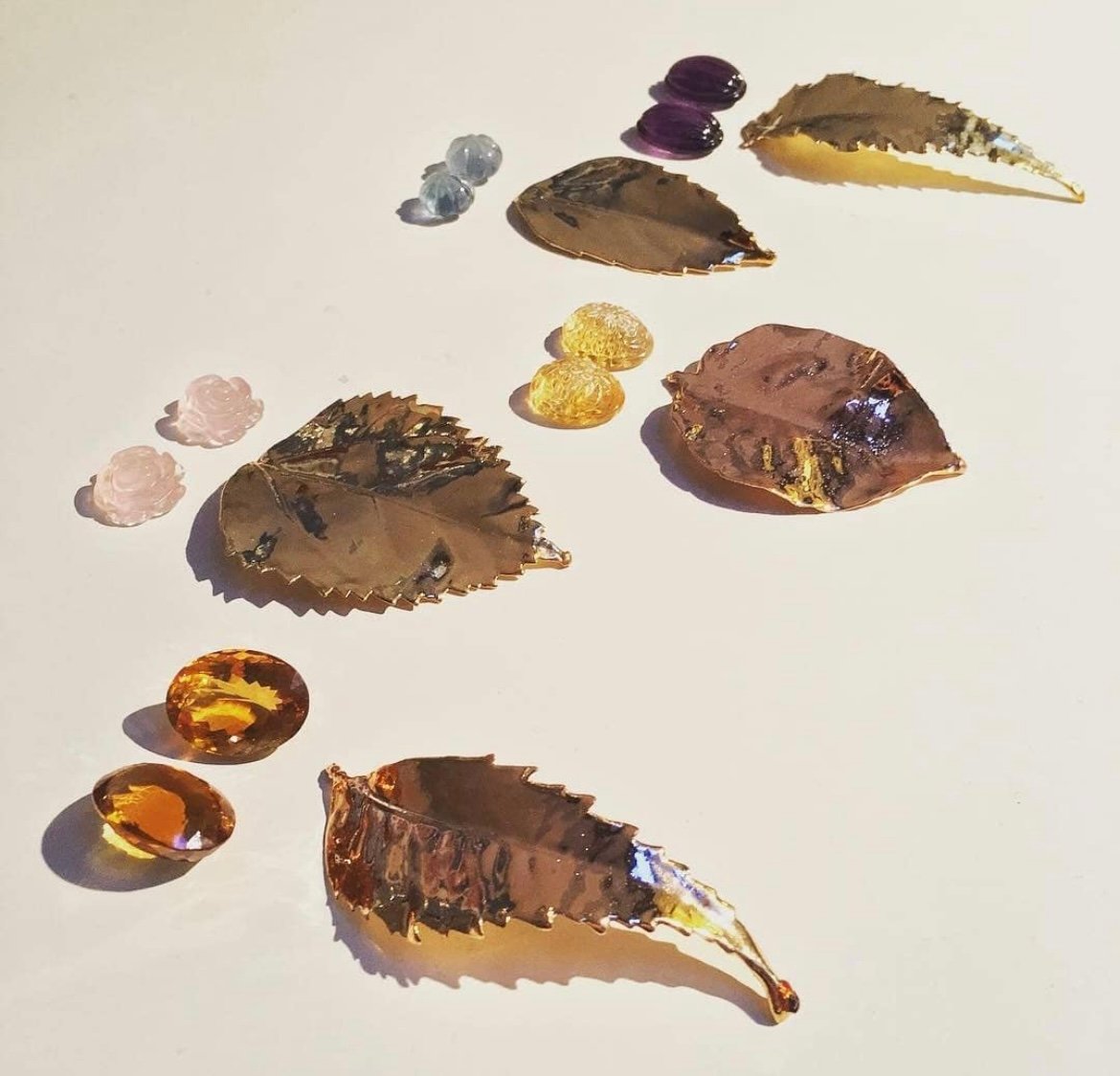
Born in the Indian city of Indore to parents with a deep passion for the arts, Akansha Sethi moved to Staffordshire when she was only a month old. Her love of art and affinity towards design was inevitable; Sethi spent much of her childhood shadowing her parents who are both renowned art collectors. “I joined them on these scouting trips throughout my childhood,” says the designer. “It was an activity that organically sparked my interest in creating an adornment that is timeless, conveys a narrative and evokes emotions which can be passed through generations.”
A few years later, Sethi began studying at Goldsmiths in London – a college famed for it’s excellent arts program and which counts some of the best artists in the world as it’s alumni. The diverse nature of her learning at Goldsmiths enabled her to explore a variety of art forms. “I belong to a family where we can trace our history back to more than ten generations through photographs and family heirlooms,” says Sethi. “My project allows key aspects of each narrative to be highlighted to maintain the presence of the stories within the family network while simultaneously allowing them to evolve. As there was no physical presence of the objects from the stories or visual references, simple prototypes were made out of clay – an activity that started a new family ritual through which the original stories could be re-told. This process helped aid my understanding of the importance of narrative when designing and also how to translate a narrative into an object.”


By the time Sethi completed her degree, she was brimming with ideas and a deep desire to see them through. Indian art and architecture remains one of her primary sources of inspiration as does her extensive collection of family heirlooms. Sethi also loves to travel and some of her most iconic pieces have been inspired by her past travels. “The Nritya collection was inspired by the City Palace in Udaipur, where each room has a story to tell through beautiful motifs and vibrant colours as well as the unique stories of each room. Each piece in the collection captures the essence of the space through a combination of hand carved stones and enamelwork,” says Sethi.
“Folio, a collection designed using hand carved multi coloured tourmalines and enamel work represents the way leaves change colour from spring to autumn while the mini Deco collection was inspired by my love of fine art. In essence, my jewellery is an outlet for my interests which I love to share with my clients. My recent collection Jardin Majorelle was inspired by the bright colours and the juxtaposition of cacti throughout the garden against the blue buildings in Marrakech. This was represented by hand carved gems set to seem like the garden itself.”

One of the brand’s serendipitous collections remains ‘Gulaab’. “I was working on a bespoke piece for a family friend wherein I tried different ways to preserve the flowers given to her by her fiancé,” reminisces Sethi. “This form of plating works best to capture the delicacy of the petals. It also reflects the authentic characteristics of the petals and also enables them to remain delicate and lightweight, whilst still allowing me to create demi fine jewellery pieces that are one of a kind. These petals have been embellished with a detachable hand carved stones, to compliment the character or the colour of the petal inside. I will be introducing another range of pieces using the same process with even more unique natural forms and a pop of colour.” The result was a standout collection that remains one of her most popular ones to date.

At a time when most brands are quickly pivoting to fit into the new normal of fashion that is sustainable, versatile and an investment, Akansha Sethi’s jewelry is already ahead of the curve. Every single piece is designed to connect with the wearer and some of the more statement jewellery have been designed to easily transform into separates apt for everyday wear. “While this is a concept that has been doing the rounds for a long time when it comes to a legacy jewellery brand like Cartier or Van Cleef, I was not able to find any in the demi fine jewellery category,” says Akansha.
“That sparked my interest; I knew my jewellery could be easily transformed into multiple styles that allowed for it to be more versatile and worn even every day! I love how a more heavier diamond necklace can be quickly transformed into one that is more apt for everyday wear, which can still be further transformed into a brooch!” This enables the jewellery to fit into the lifestyle of the Akansha Sethi woman, who she describes as one who loves to stand out and confidently wears bold colours. The AS woman also appreciates and invests in tradition, but is always looking for a way through which she can incorporate it into her modern lifestyle – an idea that Sethi translates into final product by using traditional Meenakari work and hand carved stones against a contemporary design.
“While this is a concept that has been doing the rounds for a long time when it comes to a legacy jewellery brand like Cartier or Van Cleef, I was not able to find any in the demi fine jewellery category,” says Akansha.
That sparked my interest; I knew my jewellery could be easily transformed into multiple styles that allowed for it to be more versatile and worn even every day! I love how a more heavier diamond necklace can be quickly transformed into one that is more apt for everyday wear, which can still be further transformed into a brooch!”


The world is becoming increasingly smaller and with it, access to designers from across the world. How does she think AISPI fits into the new normal of luxury retail? “With so much information available, it is easier to get access to designers and brands that might have previously remain undiscovered. In such a constantly evolving market, I think AISPI will be able to help shine the spotlight on them in a way that has never been done before,” says Sethi, as she signs off from her headquarters in London.
All images courtesy of Akansha Sethi.
– Written by Soha Joshi

